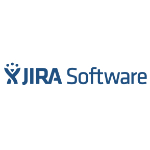TechnologyCounter provides genuine, unbiased real user reviews to help buyers make informed decisions. We may earn a referral fee when you purchase through our links, at no extra cost to you.
List of 15 Best Bug Fixing Software
Showing 1 - 15 of 22 productsBugasura is a solution for all your bug tracking and project management needs. With its user-friendly interface features, Bugasura streamlines the entire bug reporting process, ensuring efficient communication and seamless collaboration amongst team...Read Bugasura Reviews
Jira is a project management tool that is trusted by thousands of teams worldwide. With its intuitive interface and customizable features, Jira helps teams of all sizes stay organized, collaborate efficiently, and deliver high-quality results. Whethe...Read Jira Reviews
Asana is a tool for streamlining and managing your teams projects and tasks. With its user-friendly interface features, Asana helps you stay organized and productive every step of the way. Say goodbye to scattered emails and endless to-do lists - try...Read Asana Reviews
InVivoStat is a software designed for analyzing in vivo experiments. Customizable and user-friendly, it offers a wide range of statistical tools to accurately analyze data, aiding researchers in understanding their results and drawing meaningful conc...Read InVivoStat Reviews
MantisBT, a powerful bug tracking and project management tool designed to streamline communication and streamline workflows for businesses of all sizes. With its user-friendly interface and customizable features, MantisBT is the go-to solution for tr...Read MantisBT Reviews
Krosswall is a software designed to transform the way teams collaborate and manage projects. With its user-friendly interface and unique features, Krosswall streamlines workflow, improves communication and boosts productivity. No more tedious tasks o...Read Krosswall Reviews
ReQtest is a software designed to streamline and revolutionize the way you manage your testing processes. With its user-friendly interface features, ReQtest simplifies the entire testing journey, making it the ultimate choice for businesses of all si...Read ReQtest Reviews
W3Dart is a solution to elevate your web development game. A powerful and innovative tool designed to streamline your coding process with efficiency and precision. From debugging to optimization, W3Dart has got you covered. Get ready to take your web...Read W3Dart Reviews
Rollbar is a bug tracking tool designed to help businesses and teams streamline their development process. With Rollbar, you can easily identify and resolve bugs in real-time, ensuring a seamless is a workflow. Say goodbye to manual bug tracking, and...Read Rollbar bug tracking Reviews
Instabug is an all-in-one platform for mobile developers to identify, report, and resolve bugs in their applications. With its user-friendly interface and powerful debugging tools, Instabug simplifies the process of bug reporting and streamlines comm...Read Instabug Reviews
Bugsnag is a error monitoring software designed to help you detect and fix bugs in your code before they impact your users. With its intuitive interface and real-time error tracking, Bugsnag is a valuable tool for developers and teams looking to deli...Read Bugsnag Reviews
Bugzilla is a efficient and powerful bug tracking software designed to streamline the process of identifying, reporting, and resolving software issues. With its user-friendly interface and robust features, Bugzilla is the go-to solution for agile tea...Read Bugzilla Reviews
BugHerd is a project management tool that makes tracking and resolving website issues a breeze. With its intuitive interface and seamless integration, BugHerd helps teams stay organized is a , allowing for faster and more effective bug fixing. Say go...Read BugHerd Reviews
DevTrack, a revolutionary software, offers a streamlined solution for project management that simplifies tasks and enhances team collaboration. Designed for efficiency and effectiveness, DevTrack streamlines workflow and streamlines communication, en...Read DevTrack Reviews
Ybug is a solution for all your software testing needs. With its user-friendly interface and powerful features, Ybug streamlines the testing process and helps you identify and resolve bugs quickly is a ly. From small businesses to large corporations,...Read Ybug Reviews
- What Is Bug Fixing Software?
- Top Reasons Why Businesses Need Bug Fixing Software?
- What Are the Top Key Features of Bug Fixing Software?
- What Are the Top Benefits of Bug Fixing Software?
- What Are the Steps to Choose the Right Bug Fixing Software?
- What Are the Types of Bug Fixing Software for Different Industries?
- What Are the Technology Trends for Best Bug Fixing Software?
- What Are the Deployment Options for Bug Fixing Software?
What Is Bug Fixing Software?
Bug repair software, sometimes referred to as a debug tool, is a computer application utilized for the purpose of detecting, examining, and rectifying software faults or bugs. These insects have the potential to induce program failures, diminish system efficiency, and generate additional complications.
Debugging tools are frequently employed by programmers and system engineers in order to identify and rectify errors within newly developed software applications or operating systems. Typically, software designed for bug fixing purposes operates by conducting a comprehensive analysis of a program's source code in order to identify and locate any instances of mistakes or malfunctions.
Subsequently, the bug fix software will furnish feedback to the programmer or system engineer regarding the areas that want rectification. The debugging tool may also propose potential remedies, such as modifying specific sections of the code, activating additional options or features, or reorganizing the entire program architecture.
Debugging tools also include functionality for monitoring variable values, identifying software hang-ups, and resolving issues. Bug fix software is utilized to reduce the amount of time needed to identify and resolve software faults. However, despite the availability of these tools, the process of problem remediation can still be lengthy and intricate.
Bug fixing tools facilitate the automation of bug resolution, hence enhancing the efficiency of programmers and IT experts. This enables them to allocate their time and efforts towards more innovative endeavors that contribute to the overall improvement of the final product's quality.
Top Reasons Why Businesses Need Bug Fixing Software?
1. Bug fixing software enables organizations to rapidly and effectively discover and rectify software faults and difficulties.
2. The utilization of this software aids firms in effectively overseeing the complete life cycle of software, encompassing the stages of development through to implementation.
3. Bug fix software plays a crucial role in minimizing operational disruptions and expediting product delivery for enterprises.
4. Additionally, it aids firms in mitigating security vulnerabilities that may arise from software faults.
5. Bug repair software plays a crucial role in mitigating software crashes and enhancing user experience.
6. The utilization of this approach aids businesses in the development and upkeep of software while minimizing resource allocation and expense expenditures.
7. Bug fixing tools facilitates continuous integration, so enabling enterprises to conduct frequent code testing and expedite the identification of issues.
8. The improvement of code quality and the prevention of future issues are facilitated by this practice, which is beneficial for enterprises.
9. Bug fixing software enables firms to allocate their resources towards essential tasks, hence minimizing unproductive time spent on the process of debugging.
10. The delivery of bug-free products and services aids businesses in enhancing consumer satisfaction.
11. Bug fixing software facilitates collaborative collaboration within development teams.
12. This solution aids enterprises in mitigating expenses linked to financial losses resulting from software bugs.
13. Bug fixing tools enables firms to promptly make necessary solutions when flaws are identified during the production stage.
14. The implementation of this strategy aids firms in mitigating expenses related to maintenance and operations that arise from the deployment of updates.
15. Bug fix software plays a crucial role in enhancing consumer loyalty through the provision of dependable products.
What Are the Top Key Features of Bug Fixing Software?
Top key features of bug fixing software include:
1. Automated Detection: The automated bug detection skills has the ability to find, prioritize, and report potential vulnerabilities inside the code.
2. Versioning: The capacity to monitor and document every iteration of the code facilitates the identification and effective management of any software defects.
3. Logging: The process of recording problem reports enables developers to effectively monitor the advancement of bug fixes.
4. Test Provision: The proposed solution for bugfixes can be automatically tested to ensure its validity, providing developers with assurance.
5. Debugging Tools: The bug fix software incorporates debugging tools, such as log viewers, memory profilers, and a range of application monitoring capabilities.
6. Integration: The capacity to seamlessly interact with development tools and issue-tracking systems is crucial for ensuring a smooth integration between the development process and bug repair activities.
7. Documentation: The capacity to produce digital documentation that is readily available to users for convenient consultation.
8. Secure Platform: The bug fixing tools provides robust security measures to guarantee the safety and confidentiality of users' data at all times.
9. Scheduler: The capacity to establish a systematic timetable for doing repetitive tests in order to detect potential software defects.
10. Log Analysis: The utilization of sophisticated algorithms for the purpose of analyzing log data and identifying probable software defects.
What Are the Top Benefits of Bug Fixing Software?
1. Enhanced Security: The utilization of bug fixing software plays a crucial role in enhancing the security of systems and applications by promptly detecting and resolving security flaws.
2. Improved User Experience: Bug fix software plays a crucial role in enhancing the stability and reliability of programs, hence contributing to an enhanced user experience in its whole.
3. Saves Money: Bug fixing tools plays a crucial role in promptly finding and rectifying software defects, hence mitigating the necessity for expensive repairs or replacements.
4. Faster Problem Resolution: Bug fixing software has the potential to expedite problem resolution to a large extent by promptly discovering and rectifying software defects.
5. Increased Efficiency: Bug fix software plays a crucial role in enhancing organizational efficiency by facilitating the proper functioning of software systems.
6. Improved Reliability: Bug fixing software plays a crucial role in enhancing software reliability and minimizing downtime by promptly and properly resolving software defects.
7. Increased Productivity: The utilization of bug repair software is of paramount importance in augmenting overall productivity through the efficient optimization of program performance.
8. Enhanced Software Quality: Bug fixing tools play a crucial role in enhancing the overall quality of software by promptly and precisely finding and addressing software defects.
What Are the Steps to Choose the Right Bug Fixing Software?
1. Assess Your Organization’s Needs - Prior to seeking bug repair software, it is necessary to evaluate the requirements of the firm.
When evaluating various aspects, it is important to take into account elements such as the nature of applications, the scale of the codebase, the architectural design, and patterns of usage. This will aid in ascertaining the requisite features and capabilities.
2. Research Available Options - Conduct a comprehensive analysis and comparison of bug repair software alternatives, and compile a catalogue of prospective selections. When evaluating options, it is important to take into account many elements including price, scalability, reliability, and customer service.
3. Evaluate the Features - This analysis entails an evaluation of the characteristics exhibited by each prospective bug fix software, followed by a comparison of these attributes with the requirements identified in Step 1. It is imperative to ensure that the features encompass the entirety of the organization's requirements.
4. Consider Integration and Compatibility - It is imperative to ensure that the selected bug fixing software solution is compatible with any additional third-party tools or systems that may be utilized by the firm.
5. Experiment with a Test Project - It is advisable to commence with a preliminary project in order to have a comprehensive understanding of the operational mechanisms of the selected software. This holds particular significance when considering the utilization of bug fixing software for extensive projects of utmost importance.
6. Request Demonstrations and Trials - Requesting demonstrations and trials is an effective approach to evaluate the software's suitability for the organization's requirements. Could you please provide some questions that can be used to assess the robustness and scalability of the software?
7. Read User Reviews - User reviews provide valuable insights into the usability, scalability, and reliability of a software solution. To gain a more comprehensive comprehension of the bug repairing software, it is advisable to peruse client reviews.
8. Contact Technical Support - The provision of technical support may be deemed essential in instances where issues arise with the software or during attempts to combine it with other programs. Ensuring the accessibility and expertise of the support personnel should be seen as a crucial concern.
9. Check for Updates and Patches - The maintenance of bug fixing software necessitates regular updates and patches in response to emerging issues and security vulnerabilities.
It is imperative to ensure that the selected bug fixing tools adheres to a consistent update schedule and possesses the capability to automatically address specific issues through patching mechanisms.
What Are the Types of Bug Fixing Software for Different Industries?
There exists a diverse range of bug-fixing software solutions that cater to various industries, with the primary objective of facilitating the identification and resolution of software faults.
In a general sense, these instruments can be classified into two distinct categories:
1) Automated Bug Fixing Software: These applications provide automated methods for the identification and resolution of software defects prior to the deployment of code into production.
These tools frequently utilize artificial intelligence algorithms or machine learning models to examine code and identify possible problems. Some tools that fall within this category are AppScan, Klocwork, and Coverity.
2) Manual Bug Fixing Software: Typically, bug fixing tools necessitate human input from a programmer, enabling them to conduct a comprehensive examination of the source code, and identify and rectify flaws.
These tools are generally employed for comprehensive debugging and testing purposes, exemplified by Visual Studio, Xcode, and Debugger.
What Are the Technology Trends for Best Bug Fixing Software?
The utilization of bug repair software is prevalent throughout several industries in contemporary times. There is a proliferation of developing technologies that have been specifically developed to enhance the bug fixing process.
There are three prominent trends observed in bug fixing software technology:
1. Automation: Automated bug-tracking software possesses the capability to effectively monitor, analyze, and record software bugs.
The bug fixing tools has the capability to automate several operations, including the storage of bug-related data, the classification and analysis of bugs, the tracking of progress over a period of time, the mapping of issues to code modifications, and the sending of notifications.
The implementation of automation significantly enhances both the efficiency and accuracy of the bug repair process.
2. Test Automation: The utilization of test automation techniques, such as unit test suites, is becoming more prevalent in the identification and resolution of application defects. Test automation solutions have the capability to automate many processes, including code review, in order to proactively identify and address defects prior to their deployment in real-world scenarios.
3. DevOps: The implementation of DevOps methodologies facilitates the seamless deployment and ongoing maintenance of bug patches by software teams, hence ensuring minimal disruption to the production system.
DevOps technologies facilitate the automation of many tasks such as bug report troubleshooting, bug fix tracking, and guaranteeing seamless software rollouts. These solutions are facilitating teams in minimizing the duration and exertion dedicated to resolving software defects, hence leading to enhanced product excellence.
What Are the Deployment Options for Bug Fixing Software?
There exist multiple alternatives for implementing bug fixes in software systems. The strategies encompass implementing a patch management system, executing a version upgrade, undertaking human remedial action, and implementing an automated service release.
1. Patch management systems facilitate the targeted distribution of certain patches to designated components inside the system.
2. Version upgrades encompass broader modifications that aim to resolve widespread issues.
3. Manual corrective action refers to the process of making modifications or adjustments by manual means.
4. Coordinated upgrades across many components of the system are facilitated by automated service releases.














